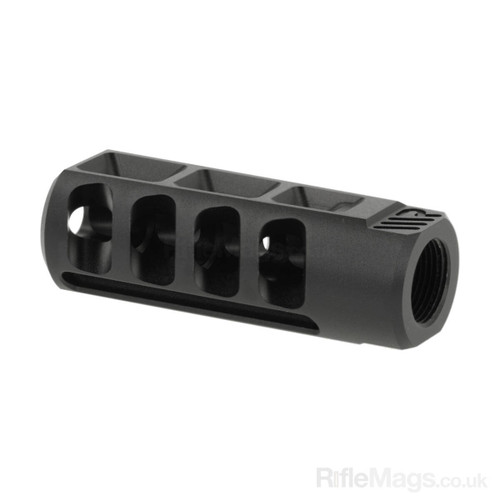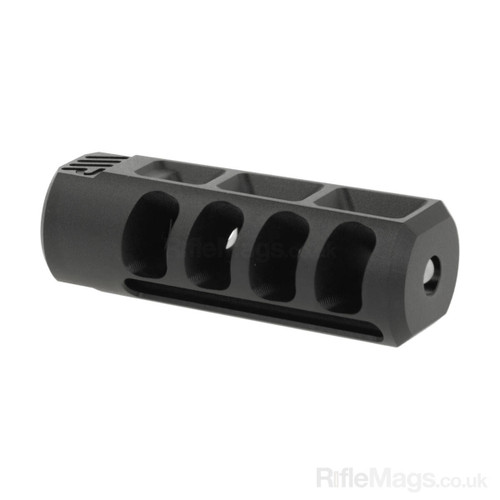The WR Gas Mongrel Hybrid muzzle brake is an innovative lightweight muzzle brake that dramatically reduces recoil and vertical jump.
The patented design is a culmination of years of research into muzzle brake gas flow modeling and barrel harmonics by a team with nearly two decades of fluid dynamics design and competition shooting experience.
It brings the best features of the popular WR Ultra Comp and WR Gas Mongrel designs together to offer game changing performance for practical applications:
- Maximum braking
- Minimal muzzle movement and bounce
- Minimal ground disturbance
- Reduced felt blast
- Slimline
Designed specifically for competition the Gas Mongrel Hybrid offers world class performance:
- Lightweight - just 40-45 grams
- Maximum recoil reduction - 70% to 84%
- Maximum vertical jump reduction - 87% to 94%
- Vertical bounce control - no additional bounce, only 2% vertical vectoring
- Reduced muzzle walk - the all aluminium design with a large surface area helps absorb and dissipate heat from the muzzle area
Like all WR brakes it avoids an integrated nut over the body to avoid metal elasticity disturbances, WR recommmed a rear jam nut (supplied) that tightens to the rear brake shoulder.
Enables faster and more comfortable handling of targets without loss of sight picture. Perfect for disciplines such as PRS, Practical, Speed Steel, Nordic Felthurtigskyting and ELR.
- 2 pre-load chambers
- 4 conical negative angled ports with 80cm² of negative surface area
- 3x3 increasing ports work gas against gas and direct lazy gas to the final port at bullet exit
- Lightweight 7075 aluminium design dissipates heat 5 types faster than steel
- No gas cutting issues
- Just 72mm long
- Helmholtz resonance - additional in-barrel resonance is minimised by controlling exit of pre-load gases with 3 step internal chamber
- Shooter comfort - massive recoil reduction makes for less shoulder fatigue - the redirected blast generated is perfectly acceptable for outdoor use with hearing protection
Available in five size formats:
- Standard hybrid up to .25 cal
- Standard hybrid up to .30 cal
- Magnum hybrid up to .30 cal
- Magnum hybrid up to .37 cal
- Magnum hybrid up to .41 cal
Threaded in the following popular sizes:
- 1/2” x 20
- 1/2” x 28
- 9/16 x 24
- 5/8” x 24
- M14 x 1
- M18 x 1
- M18 x 1.5
- 3/4 x 24 (magnum)
- 7/8 x 24 (magnum)
- 1" x 24 (magnum)
Usage and Fitting
To attach and time/clock the brake (so it is secured with the flat base horizontal) there are 3 options:
- Use the supplied jam nut
- Brake-to-barrel - Get a reputable gunsmith to machine the rear of the brake or barrel for correct clocking flush to your barrel as required
- Back the brake up to a crush washer, shim or O ring
WR recommend using a reputable gunsmith if you do not have experience with fitting brakes.
WR do not recommend designs with an integrated nut while convenient it is very rigid and not good for the metal elasticity, particularly when heated over longer courses of fire.
WR recommend brakes are removed before cleaning - cleaning both the barrel and brake.
Safety
Muzzle Brakes are for outside use with suitable hearing protection in place, the Gas Mongrel Hybrid has been developed to minimise felt muzzle blast to the shooter, unlike other brakes.
Please note that muzzle brakes are not generally suitable for indoor use. Please be aware of other shooters around you, muzzle brakes divert gas to the sides so make sure your exhaust area is clear of loose items and people at all times.










